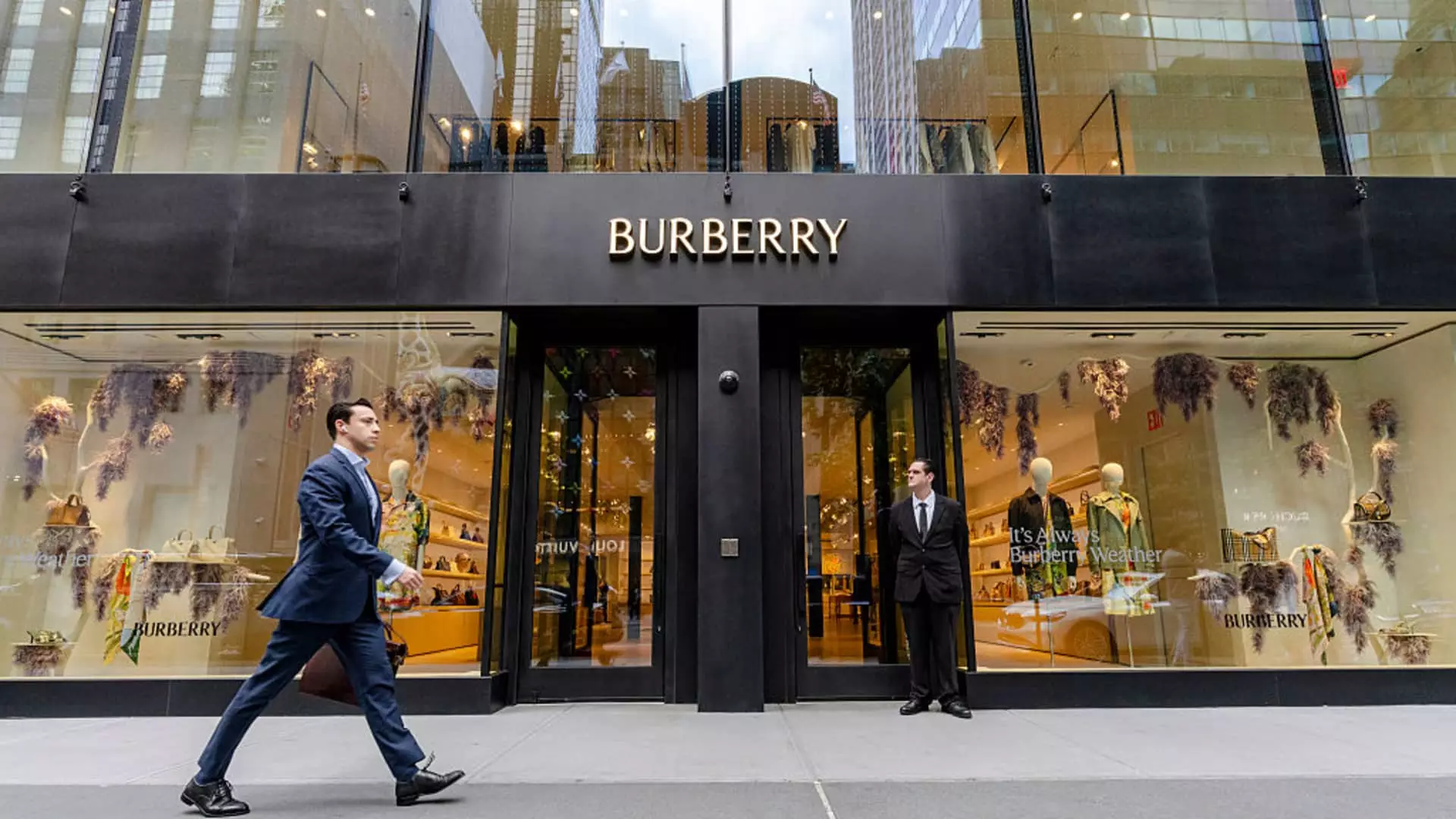At first glance, Burberry’s recent performance appears promising—a modest but significant uptick in sales within the American market and a return to some level of growth in select regions. However, delving deeper reveals a more complex reality: a luxury giant still teetering on fragile foundations amidst economic headwinds and changing consumer landscapes. The narrative of resurgence, promoted by optimistic executives and analysts, masks underlying vulnerabilities that could threaten to undo any perceived progress. It’s essential to scrutinize whether point-in-time gains truly translate into sustainable growth or if they are merely fleeting mirages amidst a sea of challenges.
The recent 4% increase in U.S. sales might be portrayed as a sign of rebounding strength, but it is critical to contextualize this within broader patterns of inconsistency. The prior regional declines—such as the 4% fall in the 2025 fiscal year and a 9% drop the year before—highlight persistent struggles. Moreover, the U.S., which accounts for roughly a fifth of Burberry’s global business, remains a volatile arena. The revival could easily be derailed if structural issues—such as the cultural disconnect from American consumers or the high sensitivity to economic shocks—are not addressed with strategic long-term planning.
What is more telling is the acknowledgment from leadership about the diversity of the luxury consumer. CEO Joshua Schulman’s comments on the “diversity” among American shoppers seem like an optimistic narrative crafted to mask the deeper issue: the luxury market’s stability is inherently fragile, heavily influenced by broader economic fluctuations and shifting political climates. His statement about “green shoots” elsewhere in the regions suggests hope, but it’s a dangerous game to rely on regional recoveries that are as uncertain as the U.S. market.
The Broader Economic and Political Storms Undermining Luxury Consumption
While Burberry faces internal restructurings and a targeted cost-saving program—including layoffs and efficiency drives—the macroeconomic environment poses a far more formidable threat. The looming threat of U.S. tariffs on imports signals a perilous obstacle for brands like Burberry that rely heavily on transatlantic trade. Such trade barriers could reverse some of the recent gains and deepen disparities among regional markets, especially as consumers become increasingly cautious amid inflationary pressures.
Furthermore, the Chinese luxury market’s sluggish recovery underscores a broader trend: the aspirational appeal of Western brands remains tethered to geopolitical tensions, travel restrictions, and economic uncertainties. With Japan and other Asian markets experiencing slowdowns due to a decline in tourism, the global luxury ecosystem is under strain. Any semblance of growth may be superficial if these external shocks persist or intensify.
The ongoing restructuring efforts—cutting 1,700 jobs, cost-cutting measures, strategic pricing—are ultimately short-term solutions that do little to address fundamental shifts in consumer preferences and global economic realities. While optimists frame these as signs of strategic agility, the truth is that they are band-aids on a fracture that requires genuine innovation and adaptation to a new socio-economic climate.
Is the Heart of British Heritage Sufficient or Misplaced?
Burberry’s core identity—its classic check patterns, trenches, and British heritage—has indeed provided a powerful branding anchor. Yet, leaning heavily on these symbols risks stagnation. In a world increasingly driven by authenticity, purpose, and relevance, heritage alone cannot sustain growth if it is not accompanied by a progressive approach that resonates with contemporary, diverse audiences.
The focus on “Britishness” as a marketing pillar could be a double-edged sword. It risks confining the brand in a storied but outdated imagery, disconnected from a generation seeking meaningful engagement rather than aesthetic nostalgia. The challenge for Burberry—and similar heritage brands—is to evolve while maintaining their iconic identity, a balancing act that the company’s current leadership appears to be grappling with.
If Burberry’s revival rests solely on reasserting its British roots and elevating its check pattern, it risks superficiality. True resilience in luxury demands innovation that aligns with modern values—sustainability, diversity, inclusivity—areas where it must do more than just talk. A brand built on tradition must also be willing to unearth new cultural narratives and to embrace change, or it will be left behind in a market that values relevance over reverence.
The Illusion of a Turnaround: Short-term Gains vs. Long-term Viability
Analyzing Burberry’s recent narrative, it’s tempting to see a company inching toward stability. Yet, beneath this surface lie more troubling questions. The company’s reliance on strategic adjustments—price optimization, cost reductions, geographic focus—is reactive rather than proactive. The real challenge is whether Burberry can reinvent itself internally, beyond the immediate financials, in a way that secures its place in a rapidly evolving luxury landscape.
The optimism from analysts, like UBS’s assessment of accelerating brand momentum, might be justified in the short term, but it risks being overly sanguine. The luxury sector’s outlook remains clouded by external pressures: geopolitical tensions, inflation, changing consumer ethics, and shifting global economic power. Despite the recent upticks, the foundation of Burberry’s future success seems unsettled, vulnerable to factors outside its control.
The painful truth—especially from a centrist liberal vantage—lies in the recognition that corporate strategies are often shortsighted, overly reliant on superficial branding and selective markets. Real resilience in luxury depends on embracing social responsibility, embracing technological innovation, and fostering genuine connections with a broader, more diverse consumer base. Until Burberry confronts these systemic issues head-on, its so-called revival is likely to remain fragile, a fleeting flicker in an otherwise turbulent market.

